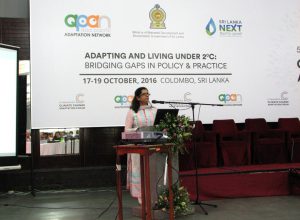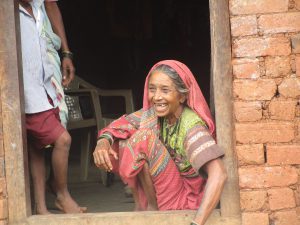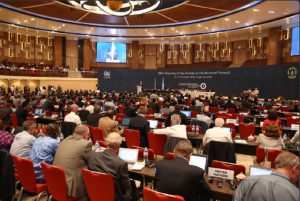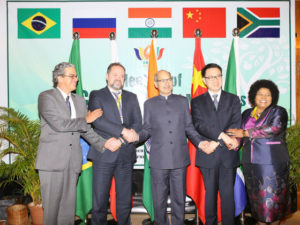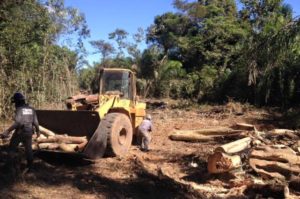The last few months have been eventful for the wind power industry in the country. After a decision on reverse bidding, the Indian government announced a policy for repowering of wind energy projects.
Explaining the need to do so, the draft policy for repowering of wind power projects states, “Most of the wind turbines installed up to the year 2000 are of capacity below 500 kW and are at sites having high wind energy potential. It is estimated that over 3,000 MW capacity installations are from wind turbines of 500 kW or below. In order to optimally utilise the wind energy resources, repowering is required.” The aim of this policy, it adds, “Is to promote optimum utilisation of wind energy resources by creating a facilitative framework for repowering.”
Though the policy sounds hopeful of effectively harnessing wind power, industry majors have varied opinions. Some are upbeat, while the others believe this will take time to materialise.
Right direction
According to Tulsi Tanti, chairman and managing director, Suzlon Group, the nod on the repowering policy by the government is a step in the right direction. “We are confident that early investors in wind energy will come forward to leverage this opportunity and contribute towards India’s energy security. Over 3,000 MW of ageing turbines are located in high wind sites and can be repowered with upgraded technology to maximise the potential of the site for higher energy yield. Repowering enables utilising the same land parcel to generate double the energy by deploying next generation wind turbines which give higher plant load factor (PLF),” he told thethirdpole.net.
Tanti said that there is immense opportunity for repowering, specifically in the states of Maharashtra, Gujarat and Tamil Nadu since they were amongst the early adopters of wind energy in the 1990s and the wind turbines are nearing the end of their lifecycle. “We are glad that the MNRE (Ministry of New and Renewable Energy) has directed the state nodal agencies to extend their support especially for infrastructure augmentation of pooling stations wherever required and land acquisition.”
However, he feels that creating a facilitative framework for repowering is only the first step. “With the initial implementation experience, we are confident other challenges will be addressed in the subsequent revisions of the policy,” Tanti said.
Welcoming the move, D.V. Giri, Secretary General of Indian Wind Turbine Manufacturers Association (IWTMA), told thethirdpole.net, “Accelerated Depreciation (AD) and Generation Based Incentive (GBI) are also made available to the repowering projects as per the conditions applicable to the new wind power projects. With the new policy, wind turbine generators of capacity 1 MW and below would be eligible for repowering under the policy. Based on the experimental measure, MNRE will extend the repowering policy to other projects also.”
However, he feels the greatest challenge is evacuation when large turbines will replace small and old ones.
On the other hand, Sunil Jain, CEO of Hero Future Energies, differs altogether in this regard. “I don’t think it will have an immediate impact because there are many other challenges in that. Again, in this case, the states have to be involved. This, in my view will take at least two to three years,” he said.
Subsidy issue
In terms of eligibility, the draft details that wind turbine generators of capacity 1 MW and below would be eligible for repowering under the policy. For repowering projects, Indian Renewable Energy Development Agency (IREDA) will provide an additional interest rate rebate of 0.25% over and above the interest rate rebates available to the new wind projects being financed by it. Benefits available to the new wind projects (AD and GBI) as per applicable conditions would also be available to the repowering projects.
However, the industry does not appear too excited by these norms. K. Kasturirangian, chairman of Indian Wind Power Association (IWPA), welcomes the decision on repowering, but feels that the current subsidy is insufficient. “It is good that the policy has been announced, because till now, there has been no incentive from the government’s side as far as repowering is concerned. But, the subsidy of half a per cent interest from IREDA is not sufficient. The states should come ahead and relax existing norms as far as the laying of wind energy generation is concerned. In Tamil Nadu, for example, the TN Power Grid should relax the 5D/7D norms for repowering and implement them. While the government agrees there is an issue here, the solution lies in implementation,” he told thethirdpole.net.
Concurring with this view, Giri adds, “While the policy addresses almost all the issues, the incentive is not attractive enough. The present owner of the old turbine would require an incentive over and above the normal GBI for accepting the offer of repowering.”
Tanti though feels the rebate of 0.25% from IREDA in addition to the interest rate rebates available to the new wind projects being financed by IREDA is a further boost for investors to consider repowering of their ageing low capacity wind turbines.
The new policy says wind farms will not be obliged to generate electricity while the new turbines are being installed. In the case of wind farms used for captive power generation, the user will have to right to buy electricity from the grid during this period.
![<p>Women farmers at a wind farm in Kutch [image by Danish Wind Industry Association / Flickr]</p>](https://dialogue.earth/content/uploads/2016/10/4271332050_b6f636683b_b.jpg)

